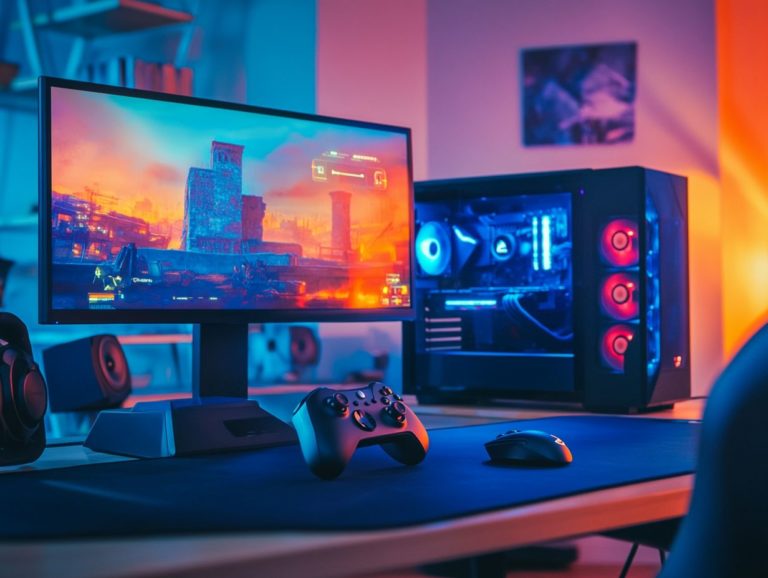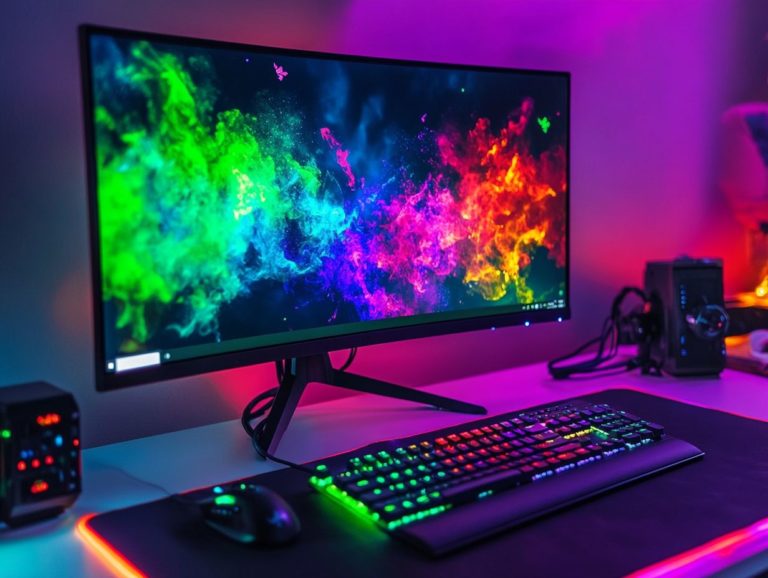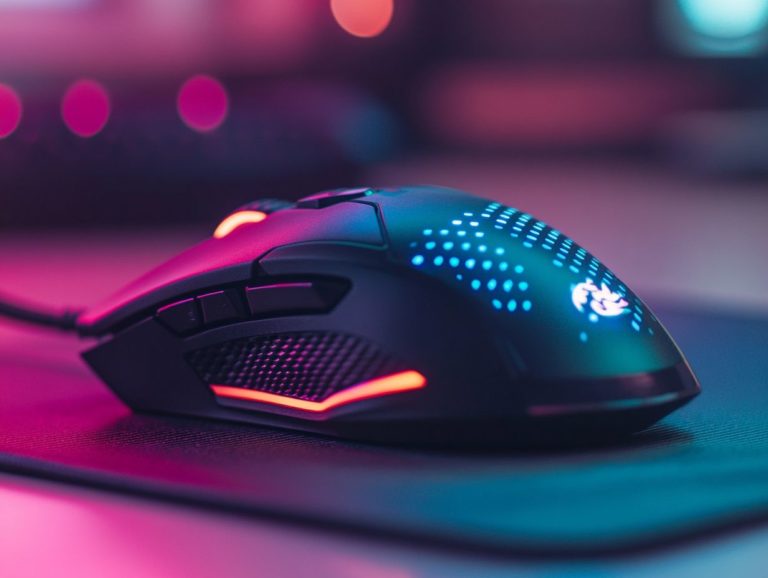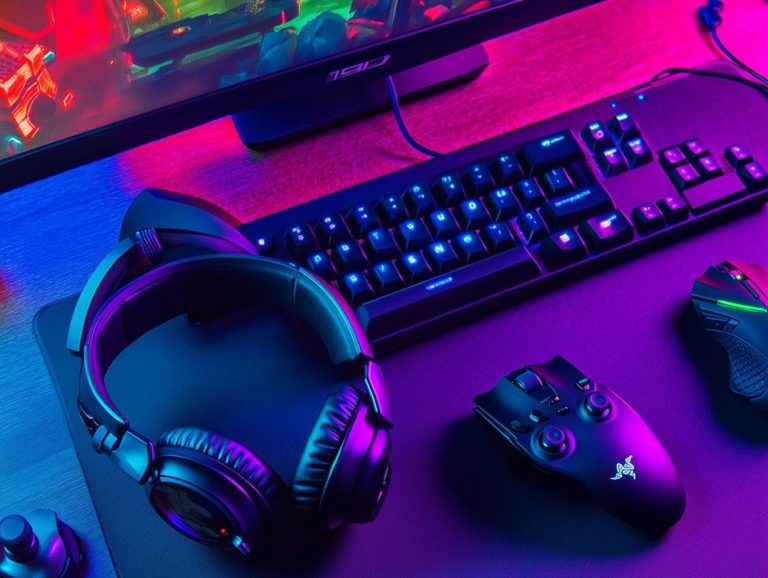how to test the performance of your gaming gear?
In gaming, your gear’s performance can make or break your experience. Learn how to test your hardware and software for the best gameplay.
This article explores various types of performance tests, from hardware assessments to software diagnostics, while guiding you through the essential tools you ll need.
You ll find a step-by-step guide on conducting tests, interpreting the results, and valuable tips to enhance your gaming setup.
Dive in and unlock the full potential of your gaming gear!
Contents
- Key Takeaways:
- Types of Performance Tests
- Tools and Equipment for Testing
- How to Conduct Performance Tests
- Interpreting Test Results
- Tips for Improving Gaming Gear Performance
- Frequently Asked Questions
- 1. How do I test the performance of my gaming gear?
- 2. What aspects of my gaming gear should I test for performance?
- 3. Can I test the performance of my gaming gear without any special software?
- 4. How often should I test the performance of my gaming gear?
- 5. Are there any specific settings I should use when testing my gaming gear’s performance?
- 6. Can I compare my gaming gear’s performance to others?
Key Takeaways:

Regularly testing your gaming gear’s performance ensures an optimal gaming experience and helps identify potential issues.
Different types of performance tests, such as hardware and software assessments, provide a comprehensive evaluation of your gaming gear.
Using recommended tools and following a step-by-step guide allows you to accurately conduct and interpret performance tests.
Why Test Your Gaming Gear Performance?
Testing your gaming gear performance is essential to ensure your 3D graphics match the demands of modern games. In a landscape where titles like BioShock Infinite and Grand Theft Auto 5 push hardware to its limits, this process is critical.
In an industry that continually raises the bar, understanding how your setup handles intense graphic loads and frame rates is paramount. By utilizing benchmark tools, you gain insights into your system’s performance, helping you identify any issues that might hinder your gaming experience.
For instance, a lagging CPU or GPU can cause frustrating slowdowns during fast-paced moments in games like Call of Duty or Fortnite. By pinpointing these weaknesses, you can make strategic upgrades for smoother gameplay, enhanced visuals, and overall satisfaction.
This proactive approach can completely change the way you engage with your favorite titles.
Types of Performance Tests
Understanding performance tests is crucial. They fall into two categories: synthetic tests and real-world tests, each serving a different purpose in assessing gaming gear.
Synthetic tests, often run through benchmark tools like Catzilla or Futuremark’s 3DMark, create controlled environments to measure maximum performance. Real-world tests dive into actual gameplay scenarios from popular titles like Tomb Raider or Shadow of Mordor, evaluating how your gear performs under typical conditions.
By grasping the nuances of both types, you empower yourself to make informed decisions about the efficiency and effectiveness of your gaming equipment.
Hardware Performance Tests
Hardware performance tests are vital for assessing your gaming setup, particularly in monitoring GPU temperatures and overall system stability during intense gameplay.
By leveraging benchmark tools like Furmark and Unigine Heaven, you can gauge how well your hardware meets the demanding graphical requirements of modern AAA titles such as Crysis 3 and Rocket League, while aiming for optimal frame rates and minimal interference from background software.
These methods offer more than just a glimpse into raw performance; they also show how different settings can influence frame rates and thermal output.
For example, using tools like MSI Afterburner or HWMonitor during gameplay can provide real-time insights into your system’s performance, capturing conditions that standard benchmarking tools may overlook.
By understanding these dynamics, you can fine-tune your setup for maximum efficiency, avoiding issues like when your hardware slows down to prevent overheating. Regular testing is vital! Keep your gaming experience smooth and enjoyable.
Software Performance Tests
Software performance tests are crucial for optimizing your gaming experience. They help you see how drivers and background applications, like antivirus software, affect your overall performance.
By regularly updating your drivers and conducting performance tests, you can identify bottlenecks caused by outdated software or unnecessary background processes. This can disrupt gameplay in titles like Metro 2033 or HAWX 2. This proactive strategy ensures smoother experiences and extends the lifespan of your gaming gear, which includes your computer, monitor, and peripherals.
In addition to updating drivers, managing individual game settings can significantly enhance your performance. Adjusting graphics settings, changing resolution, and enabling performance-focused game modes can result in higher frame rates and reduced lag.
For example, disabling V-Sync, which synchronizes the frame rate with your monitor s refresh rate, or lowering shadow quality can provide an immediate boost in responsiveness. Keep an eye on background applications that consume resources, like streaming services or browsers, to free up essential system capacities.
Ultimately, this comprehensive approach to software performance testing not only enhances your gameplay but also prolongs the life of your hardware. This allows you to immerse yourself in gaming worlds without interruptions!
Tools and Equipment for Testing
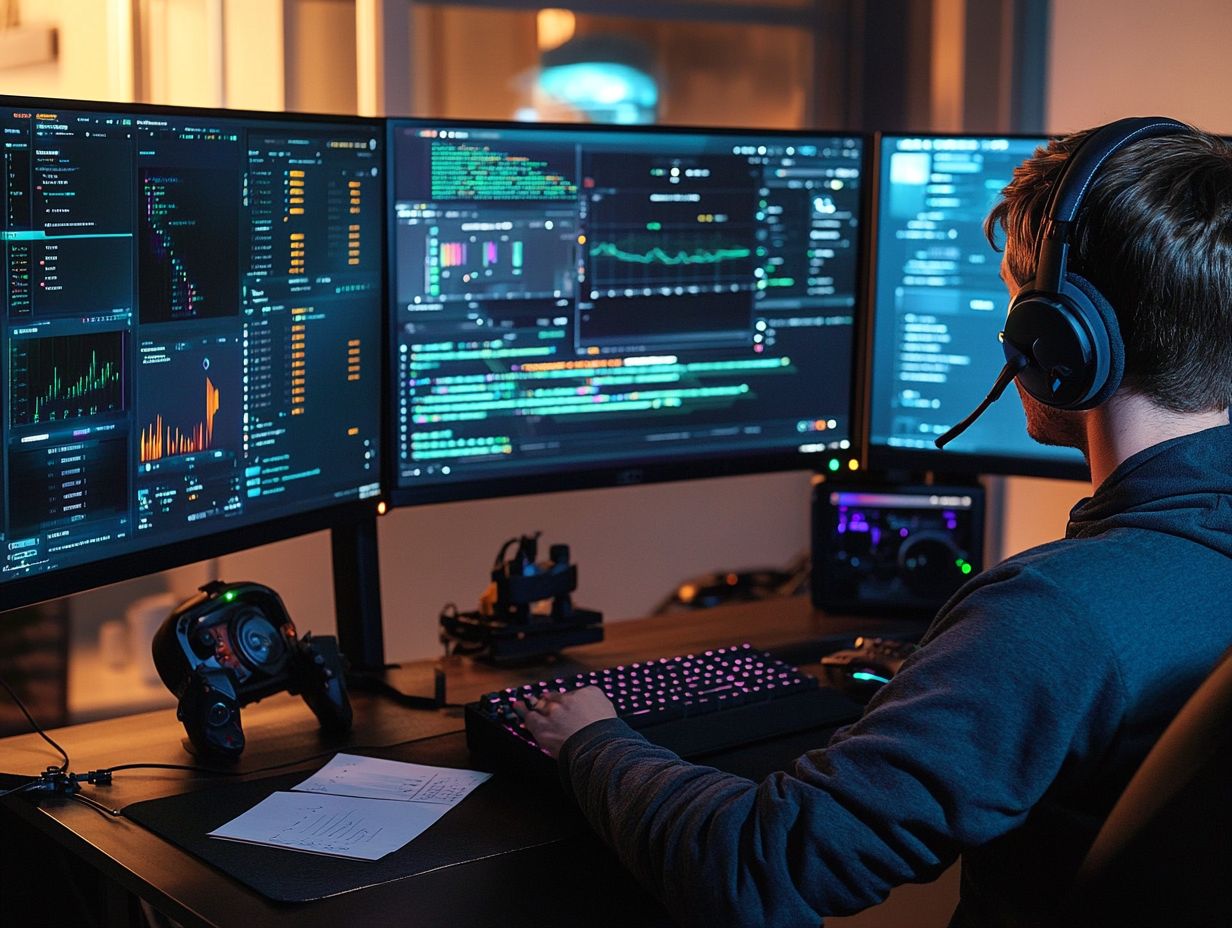
To conduct effective performance testing, it s essential to use the right benchmark tools and equipment to obtain accurate results.
Tools like Catzilla, 3DMark, Furmark, and Unigine Heaven are popular choices designed to stress-test GPUs and CPUs. They provide valuable insights about performance capabilities and potential bottlenecks.
These tools help you understand your hardware’s limits during gameplay and guide you in making informed decisions about upgrades and optimizations. This ensures a seamless gaming experience.
Recommended Tools for Accurate Results
For accurate performance testing, use benchmark tools specifically designed to stress your system. This ensures that GPU temperatures and performance metrics are reliable.
Tools like 3DMark and Furmark offer insights into how your gaming gear performs under different load conditions. They help you identify areas needing further optimization or potential upgrades. This systematic approach ensures that no aspect of your system’s performance is overlooked.
Incorporating tools such as MSI Afterburner and HWiNFO allows you to monitor GPU and CPU performance in real-time. This provides a comprehensive evaluation of your system’s stability.
Pay attention to the frame rates and thermal throttling thresholds provided by these tools. They reveal both the efficiency and longevity of your hardware.
For instance, if you notice a game dropping frame rates while temperatures rise, this signals that your cooling solutions might need an upgrade. Understanding these metrics is vital for maintaining optimal performance during intense gaming sessions.
How to Conduct Performance Tests
Conducting performance tests requires careful preparation of your gaming gear. Make sure all drivers are up-to-date before diving into any benchmark tools.
Follow these clear steps to evaluate your system’s capabilities:
- Update all drivers.
- Choose the appropriate benchmark tools.
- Run tests to assess performance under various conditions.
- Monitor results for any performance issues.
This methodical process is essential for extracting meaningful insights from tools like Catzilla and 3DMark. It ultimately guides you towards informed upgrade recommendations and an optimized gaming experience.
Now is the perfect time to test your system and discover how to enhance your gaming setup!
Step-by-Step Guide
A step-by-step guide to performance testing starts with backing up your files and ensuring your gaming gear is primed for evaluation.
Next, select the right benchmark tools think Unigine Heaven or Furmark that align with your specific needs.
Configuring your settings correctly is key for peak performance! Close any unnecessary background software to capture accurate performance metrics related to GPU temperatures and framerates.
After conducting the tests, take the time to analyze the results to gain insights into your system s strengths and weaknesses.
Before jumping into the testing phase, carefully plan the process. Set clear objectives for what aspects of performance you want to enhance, whether that s framerate stability or thermal efficiency.
During execution, monitor conditions like ambient temperature, as they can impact your results. Once you ve gathered the metrics, a thorough analysis is crucial it helps you make informed decisions about potential upgrades or configurations to elevate your gaming experience.
Documenting these insights allows you to track progress over time and supports ongoing improvements to your setup.
Interpreting Test Results
Interpreting test results is essential in performance testing, enabling you to grasp specific metrics offered by benchmark tools.
Dive into data points such as GPU temperatures, framerates, and overall system stability to pinpoint strengths and weaknesses in your gaming setup.
Tools like 3DMark and Catzilla provide comprehensive results that reveal areas ready for upgrades and optimizations.
This makes it easier for you to elevate your performance in demanding titles, ensuring you stay at the top of your game.
Understanding Performance Metrics

Understanding performance metrics is crucial for gamers aiming to optimize their gear. This involves analyzing data points like GPU temperatures and framerate.
These metrics offer invaluable insights into how your system performs under pressure, especially during intense gameplay in titles like Grand Theft Auto V or Crysis 3.
Familiarizing yourself with these metrics allows you to make informed decisions about potential upgrades and adjustments, ultimately enhancing your overall gaming experience.
Key performance metrics, such as latency (the delay before a transfer of data) and input response time (how quickly your inputs are registered), are vital, especially in competitive games like Valorant and Overwatch, where split-second decisions can determine the outcome of a match.
Don t overlook metrics like average frames per second (FPS) and minimum FPS, as they directly relate to the smoothness of your gameplay.
Analyzing these aspects helps you pinpoint performance bottlenecks, allowing you to refine your setup effectively. Ensure that every moment spent in immersive worlds is enjoyable and competitive.
Tips for Improving Gaming Gear Performance
Enhancing the performance of your gaming gear requires a comprehensive strategy. This includes optimizing settings, managing background software, and making necessary upgrades based on benchmark results.
Consistently updating your drivers and minimizing unnecessary background processes can significantly boost your system’s efficiency, ensuring demanding titles like Metro 2033 and BioShock Infinite run seamlessly at optimal framerates.
This deliberate approach elevates your current gaming experience and highlights specific areas where you might consider significant upgrades for future adventures.
Make these adjustments now to level up your gaming experience!
Optimizing Settings and Maintenance
Optimizing your settings is essential for better gaming performance. Adjust graphical options and keep your drivers updated to maximize efficiency.
Regular maintenance keeps your gaming gear at its best! A good cleaning of your system and managing background software helps prevent dips in performance.
Set the resolution and frame rate to match your hardware. This leads to smoother gameplay and less lag, which is crucial in fast-paced games.
Use tools like MSI Afterburner or GeForce Experience to monitor system performance and make real-time adjustments.
Optimizing in-game settings, such as texture quality and shadow details, significantly impacts performance. Managing startup items is also helpful; it frees up resources for your games.
Frequently Asked Questions
1. How do I test the performance of my gaming gear?
To test performance, use tools like 3DMark or FurMark. These programs run tests and provide scores that reflect your hardware’s performance.
You can also play a demanding game and monitor performance with MSI Afterburner.
2. What aspects of my gaming gear should I test for performance?
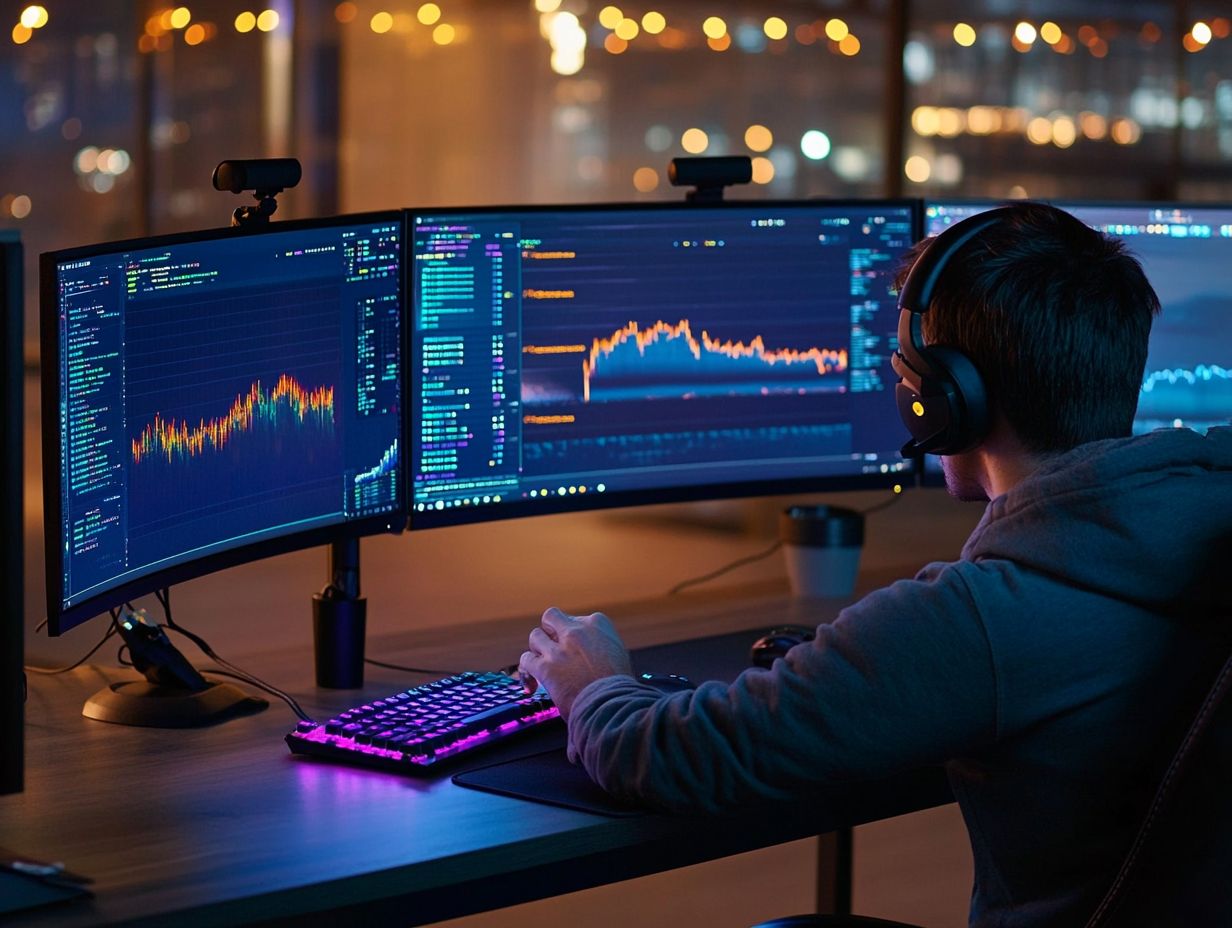
Focus on testing your CPU, GPU, RAM, and storage. These components are crucial for smooth gameplay.
Don’t forget to check peripherals like your mouse and keyboard for responsiveness!
3. Can I test the performance of my gaming gear without any special software?
Yes! Play an intensive game and monitor the framerate and loading times. Adjust graphics settings to see how your hardware performs.
4. How often should I test the performance of my gaming gear?
Test your gaming gear’s performance every few months. This helps you see if upgrades or maintenance are needed.
If you’re facing issues while gaming, it’s a good idea to test your hardware right away.
5. Are there any specific settings I should use when testing my gaming gear’s performance?
Use the highest graphics settings when testing performance. This puts a significant load on your hardware for accurate results.
Adjust individual settings to see their impact on performance.
6. Can I compare my gaming gear’s performance to others?
Absolutely! Look at benchmarks and scores online. Join forums where users share their hardware and performance results to see how you compare.

